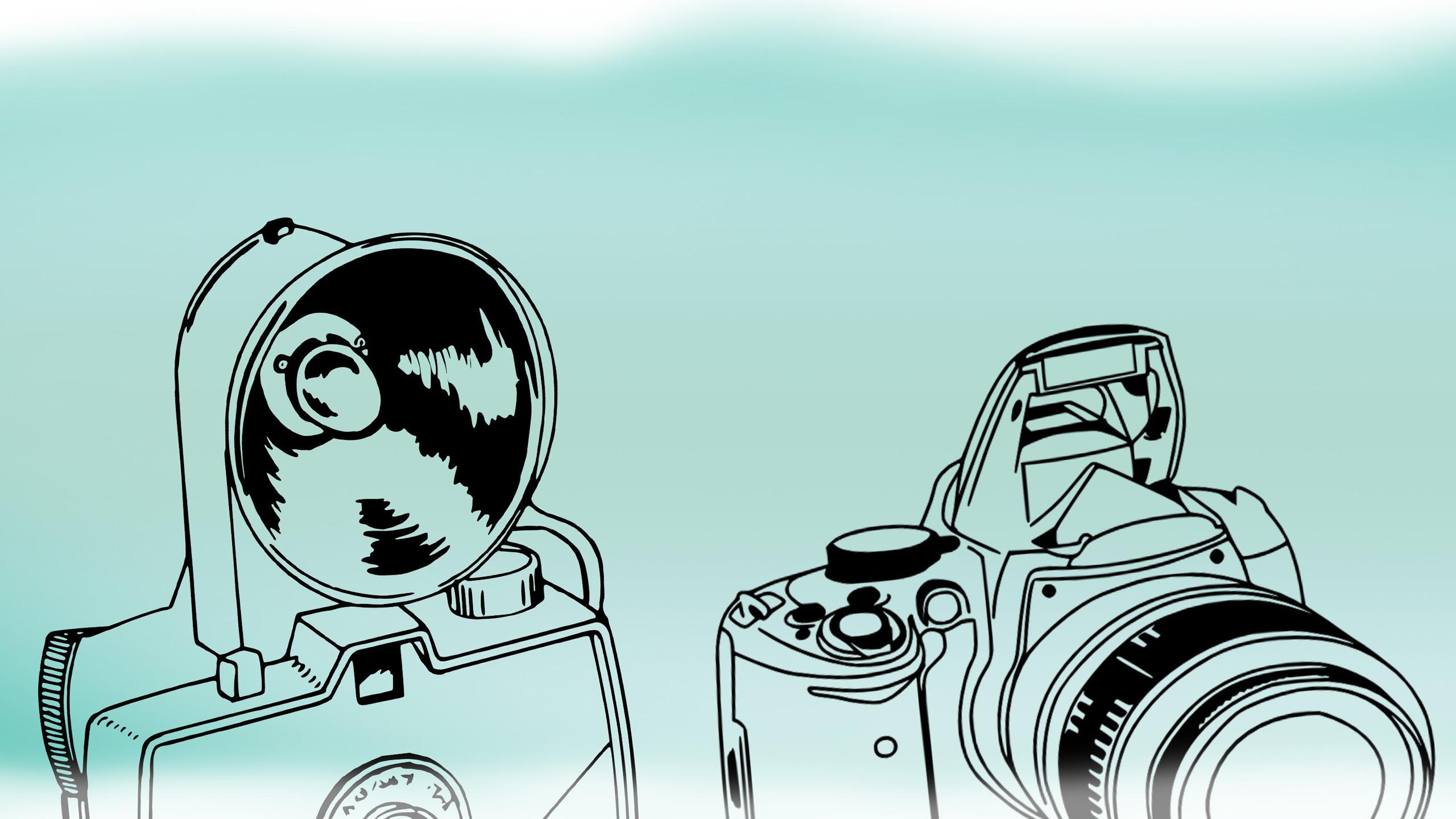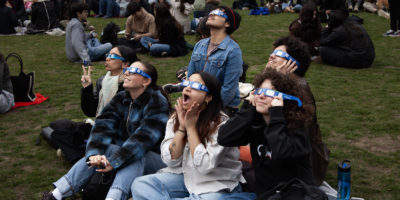By Rhea Singh
Davina McCormack-Andia was seven-years-old when a classmate called her older brother the n-word on a school bus. The second-year photography student understood right then and there that her experience as a person of colour would always be different.
Coming to Ryerson, McCormack-Andia thought some of that would change—what she found was a program with a shallow understanding of representation.
In November 2017, Ryerson’s Image Arts Course Union tried to put together an exhibit called ‘Art in Colour’. The idea was to showcase the work of students of colour in the Faculty of Communication and Design.
“It was done by our student association, which is all white,” said McCormack-Andia.
Along with this, given the demographics of the program (mostly white), the course union didn’t get many submissions from students of colour. So in a misguided move, they started seeking out artists of colour, begging them to submit to a show that wasn’t doing much.
“They asked me personally to submit because no one was submitting,” said McCormack-Andia.
McCormack-Andia is one of several students in Ryerson’s Image Arts photography program The Eyeopener spoke to who felt that the curriculum and demographics of the faculty and student body often left them out of the picture.
The Image Arts program is one of the school’s most acclaimed programs. It’s also highly exclusive. Only about 260 students were enrolled in 2017.
The few students of colour who make it find out that the curriculum barely explores artists of colour, and when it does, it’s insignificant.
“They glaze over East Asian art, and chew more than they can swallow,” said Abdul Rehman, a second-year photography student. Rahman said he remembers China being briefly discussed for its role in the creation of camera obscura, a vital development in the field of photography. But China’s role was never brought up for the rest of the course, he said.
“They’ll start talking about eastern subjects but then won’t have a fully fleshed out complicated perspective like they do with western art.”
Rehman finds that the course syllabus is predominantly focused on a western approach to photography, and neglects to highlight art from the rest of the world, something he sees repeatedly happen in his art history courses.
“I can’t see myself in anything that is shown in class,” said McCormack-Andia. “I have never once sympathized or saw myself in any of them.”
Even when courses try to exhibit non-western perspectives, Rehman said it’s often without realizing the nuances of racial representation. He says some of the western artists studied in the photography curriculum notoriously fetishized Eastern culture, which he notes is acknowledged by professors in the program, but at a base level.
“By quickly going through the topic, you’ve left out practically the entire world except for the west and have completely glazed over how photography has impacted us.”
McCormack-Andia saw the impact of a lack of representation when the 2017 ‘Art in Colour’ incident happened. She said she felt the problem wasn’t a lack of talent from students of colour, but a more foundational problem – a faculty that was dominated by white and western perspectives.
It’s a problem the Image Arts Course Union (IMACU) has been working to address, an effort sparked by the disastrous attempt to showcase students of colour.
But it’s hard to do that when there aren’t very many of them.
“Even if every single student of colour [in the Image Arts program] submitted art and it was accepted, there wouldn’t be enough,” said Naja Pereira, a second-year photography student and the union’s vice-president of equity. She’s been working with the union’s president, fourth-year film studies student Hollie Olenik, to revamp ‘Art in Colour’ and push through initiatives that will promote inclusivity.
Pereira said that IMACU will be working with the Racialised Students’ Collective in order to comprise a committee exclusively of artists of color to showcase at ‘Art in Colour,’ which will happen once again this November.
But even if they manage to get an array of diverse artists, Olenik and Pereira say another part of the struggle is getting people to care enough to show up.
“I also think even though the effort is there to put out these screenings, we have to look at who our school is made up of,” said Pereira, who added that she’s often the only person of colour or woman of coloour in her classes.
“We can throw all the events we want, but if people don’t show up it’s a little difficult to get the new language going and to get representation to be seen as a huge issue.”
The union put out an equity survey to figure out how comfortable students felt in the program. Olenik said for the past two years the results have been “middle of the ground.”
“Some say it’s fine, but there are a lot of people who say that it could be better.”
Photography program director Vid Ingelevics said he is open to hear about initiatives that students feel can strengthen the program.
“It has been stressed again at faculty meetings that it is important to show work by a diverse range of artists across the spaces of gender, sexuality and identity,” said Ingelevics.
But Ingelevics said he doesn’t necessarily agree with the western approach not encompassing artists of colour.
“There are many strong contemporary artist/photographers of colour in Canada and the United States alone that I am pretty sure would appear at some point in our faculty’s lectures as part of the gamut of contemporary photographic practitioners.”
He said that the faculty is not resistant to hiring artists of colour, but stressed that because of the way the hiring process work, this change is only apparent with part-time instructors rather than tenured and full-time instructors.
A study published by the Canadian Association of University Teachers in April of this year found that university faculties in Canada seriously lacked representation and found “significant wage gaps” that especially targeted female and racialized staff.
The study, which was based on the 2016 census, also found that there were fewer assistant professor positions available, which “will impede progress” towards more racial diversity on university faculties.
McCormack-Andia turned back to the root of her program, photography, to challenge it.
She created a photo project called ‘My Voice,’ a series of fine art portraits featuring other artists of colour, with discussions on the struggle and success of making it through a white-dominated industry.
“I really wanted to bring up the topic of kids of colour succeeding in art spaces,” she said.
“The art community loves to be inspired and sometimes takes from the art of people of color,” said Ruhama Dechassa, one of the project’s subjects. “But when it comes to encouraging them to pursue art, everyone is silent.”
The media production student said she participated in the project after feeling like her program didn’t genuinely discuss the realities of being an artist of colour.
“It’s actually kind of discouraging —the professors even tell us that the statistics of people of colour in the media landscape are scarce.”
As another subject in ‘My Voice’, second-year creative industries student Alice Yao said even when the representation of artists of colour happens, it stems from student-run initiatives rather than Ryerson themselves.
Yao, who specializes in curation, believes that simply promoting artists of color shouldn’t be the limit when embracing people of color within the art community.
“It’s not enough to just have representation in the artists, you need to have a diverse range of voices who are representing the artists,” said Yao.
In McCormack-Andia’s eyes, she is just a photographer. But she’s known since she was seven that she has to always prove herself, never just in the context of being a photographer, but one that is a mixed race Latin woman.
“White is always the normal, and we are always viewed as the other,” she said. “You always have to prove yourself even more than anyone else would.”










Leave a Reply